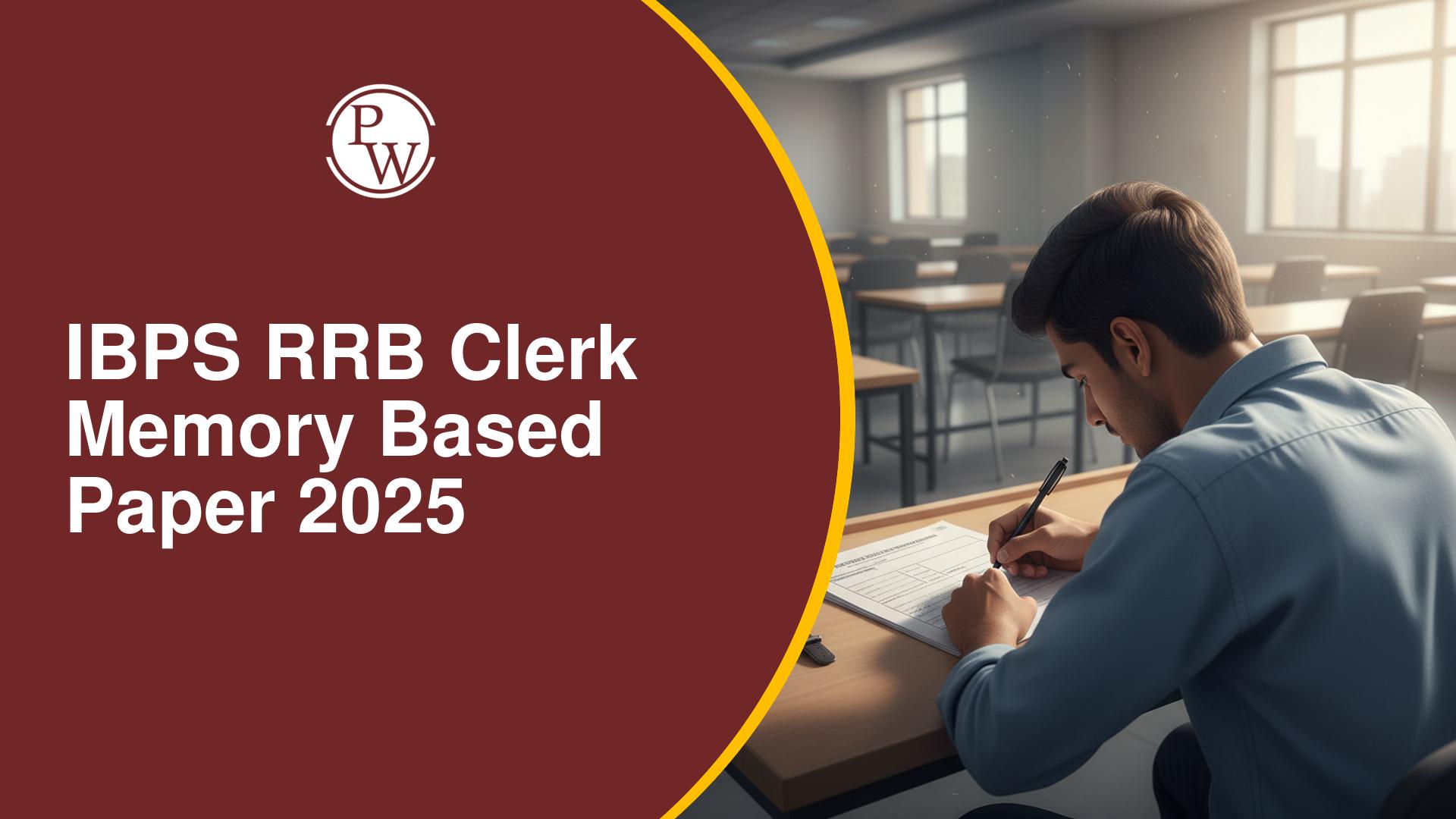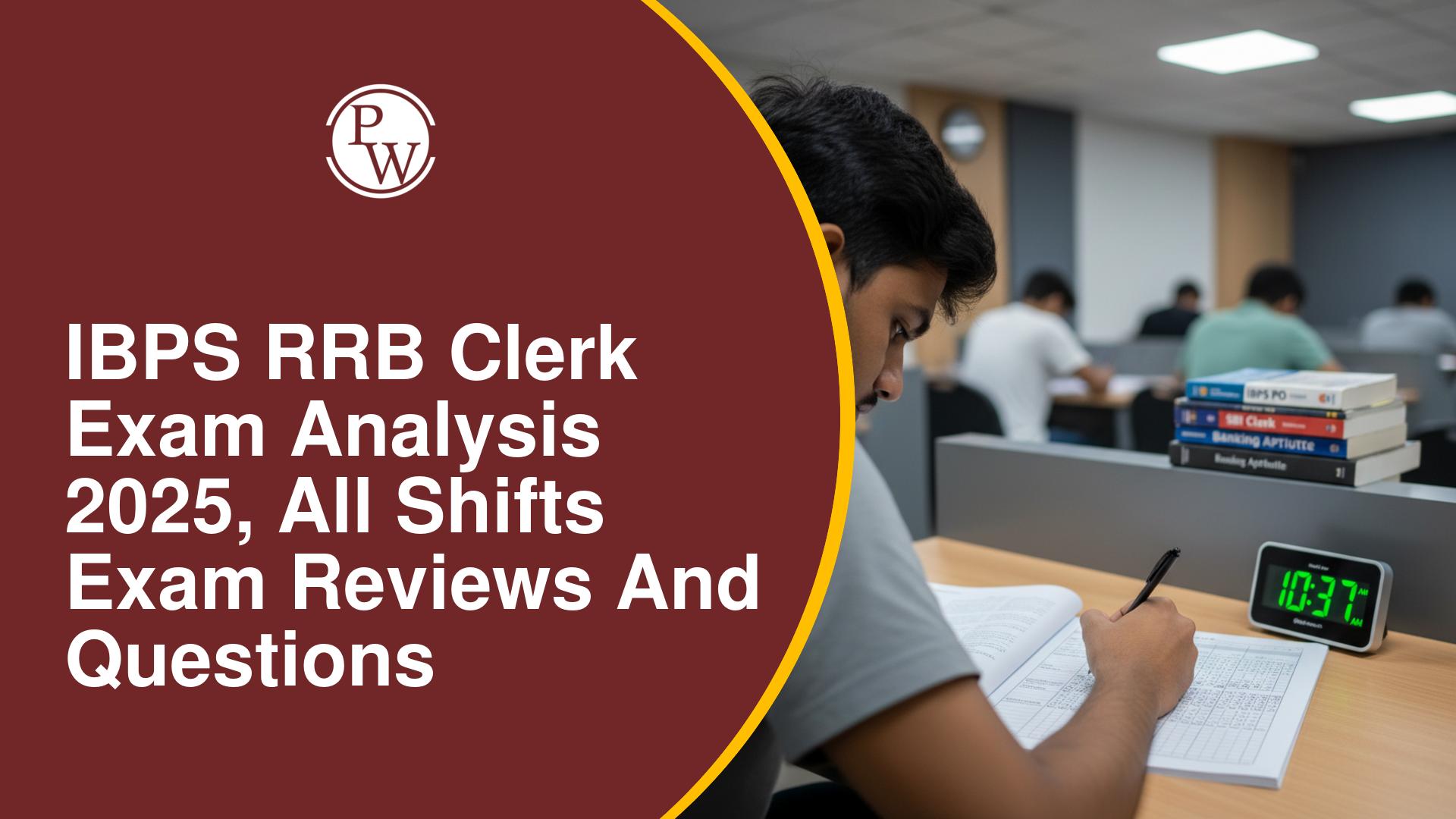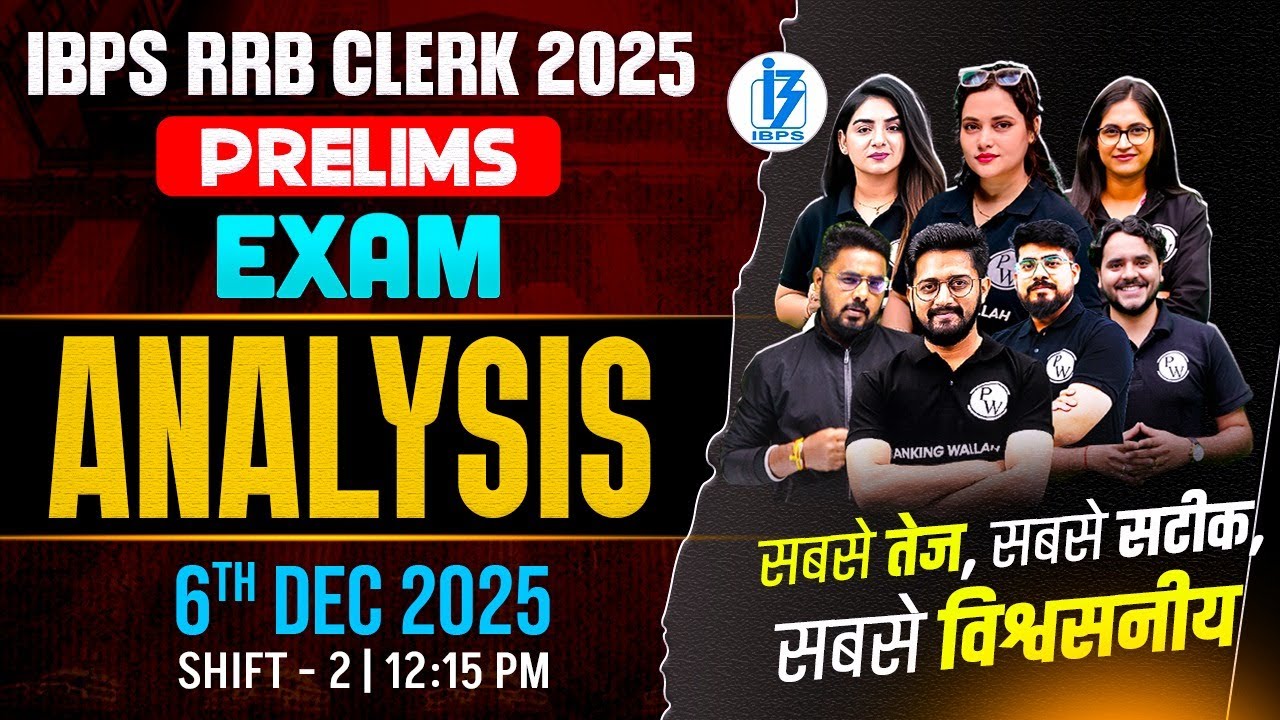
Input Output Reasoning Questions for IBPS RRB PO and Clerk
In the reasoning ability section of IBPS RRB PO and Clerk Exam, the Input Output Reasoning Questions are scoring to enhance overall performance in the examination. It tests candidate’s ability to analyze and transform sequences based on specific patterns or rules.
Input Output reasoning is the process of rearranging data, sequences, or messages consisting of words, numbers, or both, based on specific rules. In Input Output reasoning questions, a sequence of words, letters or both is considered as an input and which is then processed or rearranged by a machine to produce the sequential outputs.
Input Output Reasoning Questions
Input Output reasoning is the process of rearranging data, sequences, or messages consisting of words, numbers, or both, based on specific rules.
Input and Processing:
-
A sequence of words, letters, or numbers is given as input.
-
This input is passed through a "processing machine" or reorganized to produce sequential outputs.
Objective:
-
Candidates must identify the pattern used in rearranging the input elements.
-
They need to determine the final output or the last step, including the position of elements in a specified way.
Variety of Patterns:
-
Patterns can vary widely based on the elements present at input and the rules for their rearrangement.
-
Examples include sorting, arithmetic operations, positional changes, and logical operations.
Key Concepts of Input Output Reasoning Questions
Pattern Recognition:
Identify and understand the logical pattern or rule applied to the input to generate the output.
Patterns can include mathematical operations, positional changes, sorting, reversing, etc.
Step-by-Step Processing:
Process the input in a sequential manner, following specific steps to achieve the final output.
Each step should be clear and consistent with the identified pattern or rule.
Mechanical Approach:
Approach the problem as if you were a machine, ensuring each transformation is precise and systematic.
Avoid subjective or intuitive leaps; rely strictly on the given pattern or rules.
Example Analysis:
Study the example input and its corresponding output thoroughly.
Understand how each element of the input is transformed or manipulated in each step.
Application to New Input:
Apply the same pattern or rule used in the example to the new input.
Ensure the process is replicated accurately to generate the correct output.
Intermediate Stages:
Be prepared to provide intermediate stages or steps of the transformation, not just the final output.
Each intermediate stage should logically follow from the previous one based on the identified pattern.
Speed and Accuracy:
Practice to improve the speed of recognizing patterns and applying them correctly.
Ensure accuracy by double-checking each step of the transformation process.
Types of Transformations:
-
Sorting (alphabetically, numerically, ascending, descending).
-
Arithmetic operations (addition, subtraction, multiplication, division).
-
Positional changes (shifting positions, swapping, rotating).
Input and Output Reasoning Question Tricks and Tips
candidates can utilize the following tips and tricks to effectively solve questions in the Input-Output reasoning section:
Tip #1:
The quickest and most efficient way to identify a pattern is to observe the arrangement in the final step and then work backwards to understand the processing steps required.
Tip #2:
In shifting-type Input-Output reasoning, the shifts can be of various types and may involve several steps. Therefore, not all steps may be possible. Here are some examples to provide a clearer idea of the types of questions asked in exams:
Tip #3:
Candidates should look for the following patterns in sequence to solve Input-Output reasoning questions:
-
Arranging the given words in forward or reverse alphabetical order.
-
Arranging the given numbers in ascending or descending order.
-
Writing a particular set of words in reverse order, step by step.
-
Changing the positions of words/numbers according to a set pattern.
By following these tips, candidates can efficiently tackle Input-Output reasoning questions in exams.
Solved Input Output Reasoning Questions
Directions: Study the following data carefully and answer the questions accordingly.
When a machine, which arranges numbers, is given a set of numbers to arrange, it rearranges them in a particular way. The following set is a manifestation of the arrangement made by the machine.
Input : 243 357 1296 876 1359 2271
Step 1 : 82 120 433 293 454 758
Step 2 : 652 22 176 512 179 5013
Step 3 : 60 04 42 10 63 00
Step 4 : 06 04 06 01 09 00
Step 5 : 00 01 04 06 06 09
The following set will follow the same arrangement pattern. Find out the steps and answer the following questions accordingly.
Input : 543 1971 2235 231 894 3234
What will be the outcome if we subtract the second number from the left end of step 1 from the third number from the right end of step 2?
Solution:
Arrangement Logic :
In step one, each number is divided by 3 and 1 is added to the resultant.
In step two, the first digit from left of each number is squared and 1 is added to the resultant. And then the rest of the digits of each number are added within the number.
In step three, all the digits of each number are multiplied within the number.
In step four, all the digits of each number are added within the number.
In step five, all the numbers are arranged in increasing order from left to right.
Input : 543 1971 2235 231 894 3234
Step 1 : 182 658 746 78 299 1079
Step 2 : 210 3713 5010 508 518 216
Step 3 : 00 63 00 00 40 12
Step 4 : 00 09 00 00 04 03
Step 5 : 00 00 00 03 04 09
The second number from the left end of step 1 is 658.
The third number from the right end of step 2 is 508.
Subtraction : 508 - 658 = -150.
2.Directions: Study the following data carefully and answer the questions accordingly.
When a machine, which arranges numbers, is given a set of numbers to arrange, it rearranges them in a particular way. The following set is a manifestation of the arrangement made by the machine.
Input : 243 357 1296 876 1359 2271
Step 1 : 82 120 433 293 454 758
Step 2 : 652 22 176 512 179 5013
Step 3 : 60 04 42 10 63 00
Step 4 : 06 04 06 01 09 00
Step 5 : 00 01 04 06 06 09
Solution:
The following set will follow the same arrangement pattern. Find out the steps and answer the following questions accordingly.
Input : 543 1971 2235 231 894 3234
Which number is second to the left of the first number from the right end in step 4?
Arrangement Logic :
-
In step one, each number is divided by 3 and 1 is added to the resultant.
-
In step two, the first digit from left of each number is squared and 1 is added to the resultant. And then the rest of the digits of each number are added within the number.
-
In step three, all the digits of each number are multiplied within the number.
-
In step four, all the digits of each number are added within the number.
-
In step five, all the numbers are arranged in increasing order from left to right.
Input : 543 1971 2235 231 894 3234
Step 1 : 182 658 746 78 299 1079
Step 2 : 210 3713 5010 508 518 216
Step 3 : 00 63 00 00 40 12
Step 4 : 00 09 00 00 04 03
Step 5 : 00 00 00 03 04 09
Practise Questions for Input Output Reasoning
Practice Questions :
Q1. Directions: Study the following data carefully and answer the questions accordingly.
When a machine, which arranges words and numbers, is given a set of words and numbers to arrange, it rearranges them in a particular way. The following set is a manifestation of the arrangement made by the machine.
Input : shade 29 52 white 98 blue color 45 33 zebra
Step 1 : blue shade 52 white 98 color 45 33 zebra 29
Step 2 : color blue shade 52 white 98 45 zebra 29 33
Step 3 : shade color blue 52 white 98 zebra 29 33 45
Step 4 : white shade color blue 98 zebra 29 33 45 52
Step 5 : zebra white shade color blue 29 33 45 52 98
The following set will follow the same arrangement pattern. Find out the steps and answer the following questions accordingly.
Input : 25 night 88 jump prank 66 34 glue alone 28
In step two, which word is third to the left of 25?
Q2. Directions: A machine rearrangement given an input line having numbers in a particular set of rules in step by step. The following is an illustration of input and its rearrangement:
INPUT: 5496 2893 1798 2384 7631 4825
STEP I: 4569 2389 1789 2348 1367 2458
STEP II: 5946 3928 1798 3248 1376 5248
STEP III: 54 32 19 34 17 54
STEP IV: 20 6 9 12 7 20
Step IV is the last step of the above input. As per rules followed in the given steps, find appropriate steps for given Input.
INPUT: 1523 4139 9871 6329 8514 2793
How many even numbers are there in step III?
Q3. Directions: A machine rearrangement given an input line having numbers in a particular set of rules in step by step. The following is an illustration of input and its rearrangement:
INPUT: 5496 2893 1798 2384 7631 4825
STEP I: 4569 2389 1789 2348 1367 2458
STEP II: 5946 3928 1798 3248 1376 5248
STEP III: 54 32 19 34 17 54
STEP IV: 20 6 9 12 7 20
Step IV is the last step of the above input. As per rules followed in the given steps, find appropriate steps for given Input.
INPUT:1523 4139 9871 6329 8514 2793
What is the difference of the fourth number from the left end in step I and 1st number from left end in step II?
Q4. Directions: Study the following data carefully and answer the questions accordingly.
Input:- 25 76 18 95 65 47 69 93 29 33
Step 1- 95 25 76 18 65 47 69 93 29 33
Step 2- 95 25 76 18 65 47 69 29 33 93
Step 3- 76 95 25 18 65 47 69 29 33 93
Step 4- 76 95 25 18 65 47 29 33 93 69
Step 5- 24 4 18 7 19
Step 6- 24 19 18 7 4
Step 7- 31 26 25 14 11
Step 7 is the last step as per the rules answer the following questions for the given input
Input:- 77 23 15 97 67 44 65 94 30 36
What is the sum of Step 6 and Step 7?
Q5. Directions: A machine rearrangement given an input line having numbers in a particular set of rules in step by step. The following is an illustration of input and its rearrangement:
A number arrangement machine when given an input line of numbers rearranges them following a particular pattern in each step. The following is an illustration of an input and rearrangement
Input: 725824 399423 885341 537642 718354 414792 492543
Step I: 399423 414792 492543 537642 718354 725824 885341
Step II: 9 4 9 4 16 16 1
Step III: 399432 414796 492552 537646 718370 725840 885342
Step IV: 399438 414820 492560 537676 718370 725840 885358
Step V: 834993 012484 025694 636775 013787 024587 835588
Step VI: 36 19 26 34 26 26 37
As per the pattern followed in the above steps, find the output for the given input:
Input: 294435 576493 978876 252349 747962 918125 45326
What is the sum of the first number from right of step IV and the third element from the left of step III?
Input Output Reasoning Questions
Input Output Reasoning Questions for Mains Level
Directions: Study the following data carefully and answer the questions accordingly.
1. If a perfect square is after an odd number then the result will be the subtraction of the square number from the odd number.
2. If an odd (prime) number is after an even number then the result will be the addition of both the numbers.
3. If an even number is after an even number then the result will be the difference of both the numbers.
4. If an odd number(non-prime) is after another odd number then the result will be the addition of both the numbers.
5. If an odd (non-prime) number except (2) is after an even number then the result will be the subtraction of the odd number from the even number.
6. If an even number(not a perfect square) is after an odd number then the result comes by multiplying the numbers.
Find the multiple of the resultant of the first and second row.
21 16 4
11 9 15
Directions: A word and number arrangement machine, when given an input line of words and numbers, rearranges them following a particular rule in each step. The following is an illustration of input and rearrangement.
Input: Vibrant 1331 Individualistic 625 Scratchy 196 Responsibilities 576 Organization 2116 Rainbow 841
Step I: Responsibilities Vibrant 1331 Individualistic 625 Scratchy 576 Organization 2116 Rainbow 841 691
Step II: Individualistic Responsibilities Vibrant 1331 625 Scratchy Organization 2116 Rainbow 841 691 675
Step III: Scratchy Individualistic Responsibilities Vibrant 1331 Organization 2116 Rainbow 841 691 675 625
Step IV: Organization Scratchy Individualistic Responsibilities Vibrant 1331 2116 Rainbow 691 675 625 841
Step V: Vibrant Organization Scratchy Individualistic Responsibilities 2116 Rainbow 691 675 625 841 1331
Step VI: Rainbow Vibrant Organization Scratchy Individualistic Responsibilities 691 675 625 841 1331 6112
Step VI is the last step
Find the different steps of output using the above mentioned logic for the following input.
Input: 1901 Solution 4002 Physics 10031 Internationalism 2122 Interesting 4042 Strengths 2007 Characteristic
How many steps are needed to reach the final output?
Input Output Reasoning Questions FAQs
Q1. What is Input-Output Reasoning?
Q2. What are the common patterns used in Input-Output reasoning questions?
Q3. How can I identify the pattern used in a given Input-Output reasoning problem?
Q4. What strategies can I use to solve Input-Output reasoning questions quickly and accurately?









